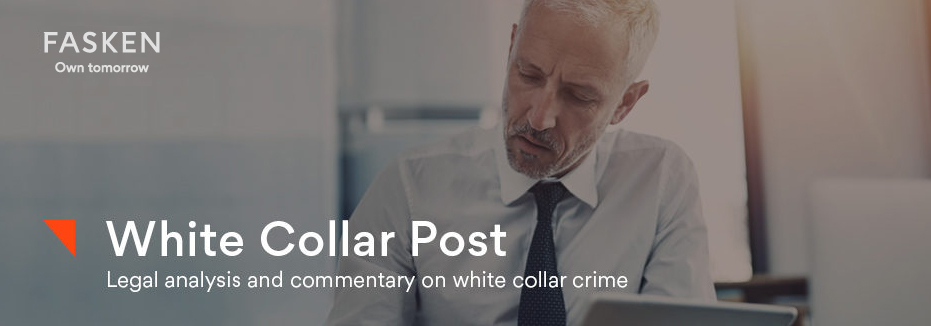Corporate board members devote significant time to financial oversight and strategy, while often neglecting steps needed to protect and promote its most important intangible asset – its culture and reputation. The negative effects of rumors of bribery and corruption can often be as problematics as clear accusations or even convictions.
Corporate boards would be well advised to assess the actual and potential impact that allegations of corruption and other unethical conduct may have on the share price of their company including their company’s market capitalization.
Corporate directors and officers have three general legal duties; the duty to act carefully, the duty to act loyally, and the duty to act lawfully. First, the duty of care of corporate directors and officers is a special case of the duty of care imposed throughout the law under the general heading of negligence. Laws builds on moral, policy, and experiential propositions. The law of negligence is no exception. The moral proposition that underlies the law of negligence is-that if a person assumes a role whose performance involves risk that affect others, this person is under a moral duty to perform that role carefully. Therefore, corporate directors and officers are under an obligation to take steps to affirmatively reduce risks, and an omission may be wrongful.
On this foundation of moral blame, the law of negligence has established a structure of legal blame or liability. The structure of legal blame under the law of negligence generally parallels the structure of moral blame. government officials are engaged by definition in governing, their decisions will often have adverse effects on other persons. When officials are threatened with personal liability for acts taken pursuant to their official duties, they may well be induced to act with an excess of caution or otherwise to skew their decisions in ways that result in less than full fidelity to the objective and independent criteria that ought to guide their conduct.
There are plenty of case studies that evaluate the impact that the loss of trust from key stakeholders resulting from public rumors and allegations can have. These stakeholders may be the general public and institutional investors but they also include existing and potential clients. Especially the institutional investors are increasingly sensitive to compliance related violations (or rumors thereof) by companies within their portfolio. As an example, the world’s largest pension fund (Norwegian Government Pension Fund) excluded ZTE from funding due to alleged corrupt behavior.
International authorities are beginning to establish a track record of corporate convictions and multi-million-dollar penalties. Recent and ongoing criminal prosecutions of individuals have also put executives on notice that they too will face the harsh consequences of violating anti-corruption laws including the U.S. Foreign Corrupt Practices Act (FCPA) or the Canadian Corruption of Foreign Public Officials Act (CFPOA). Under Canada’s Integrity Regime, companies that do business with government also face suspension or debarment when charged or convicted under the CFPOA or similar foreign anti-corruption laws.
Internationally, cases have shown that enforcement agencies are going to continue to scrutinize anti-bribery and anti-corruption (ABC) compliance programs and will likely bring charges when violations are the result of willful or reckless conduct. In particular, enforcement agencies may bring charges when there is a failure to adequately ensure the existence of an effective ABC compliance program resulting in the failure to prevent violations of the law.
Therefore, board members and executives must protect their organizations and themselves, by effectively implementing a robust ABC compliance program, as well as maintaining effective detection and investigation procedures including continuous improvement of the effectiveness of any existing ABC compliance program.
Here are some practical suggestions that may be useful to Board members and senior executives:
• Sustained leadership on transparency and integrity is vital.
• Strong anti-corruption measures and repeated staff training is crucial.
• The compliance office must be answering directly to the CEO and report to the Board.
• When allegations occur, move quickly with a forensic audit and if criminal issues are uncovered turn them over to the appropriate authorities.
• Ensure that the staff remuneration is not an incentive to sell contracts at all cost.
• Make it clear in documentation that this is a “clean” company that does not bribe – this has been demonstrated to be a deterrent for bribe asking.
• Include in the external audit a review of the compliance on anti-corruption measures.
• Ensure full transparency in contract management.
• Publish who the real beneficial owners of their company and subsidiaries are.
• Beware of transfer pricing and tax evasion since it creates impoverishment in countries where the company is working; especially in the natural resources sector and in poorer countries.

